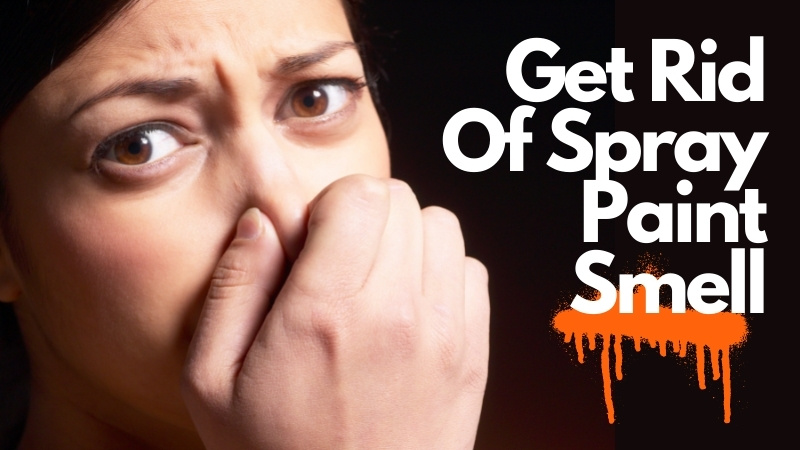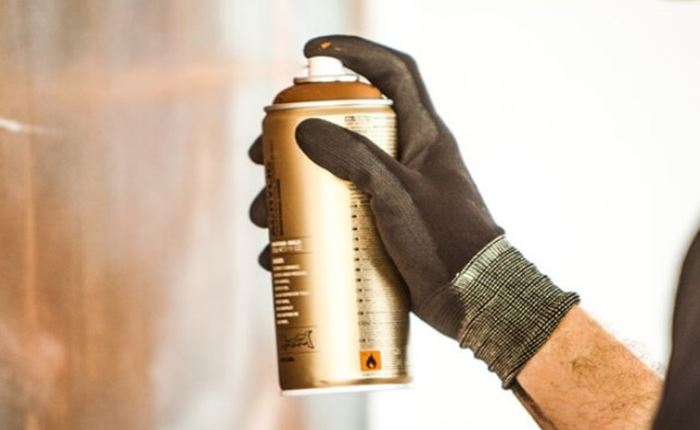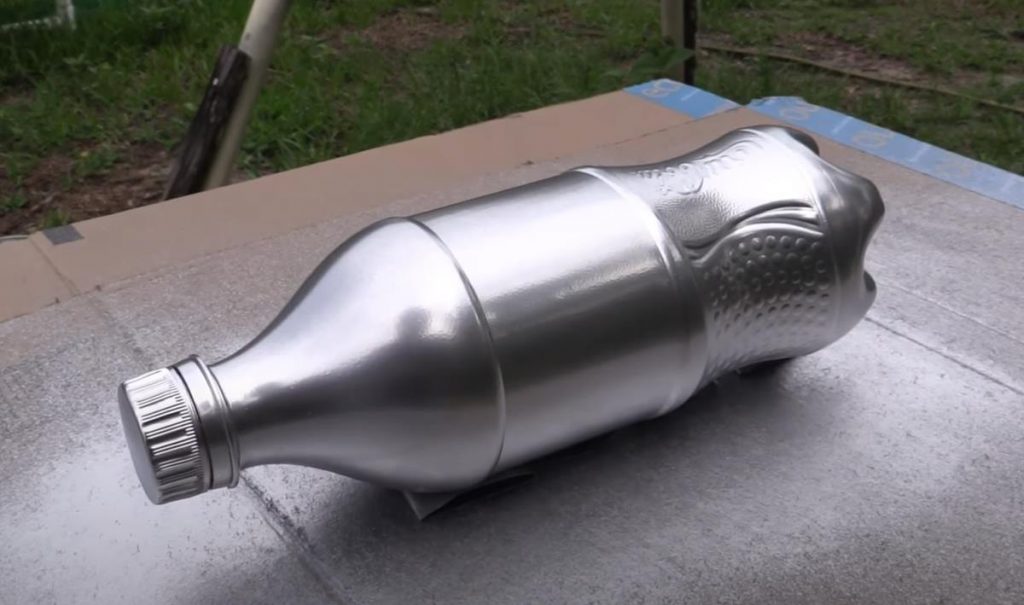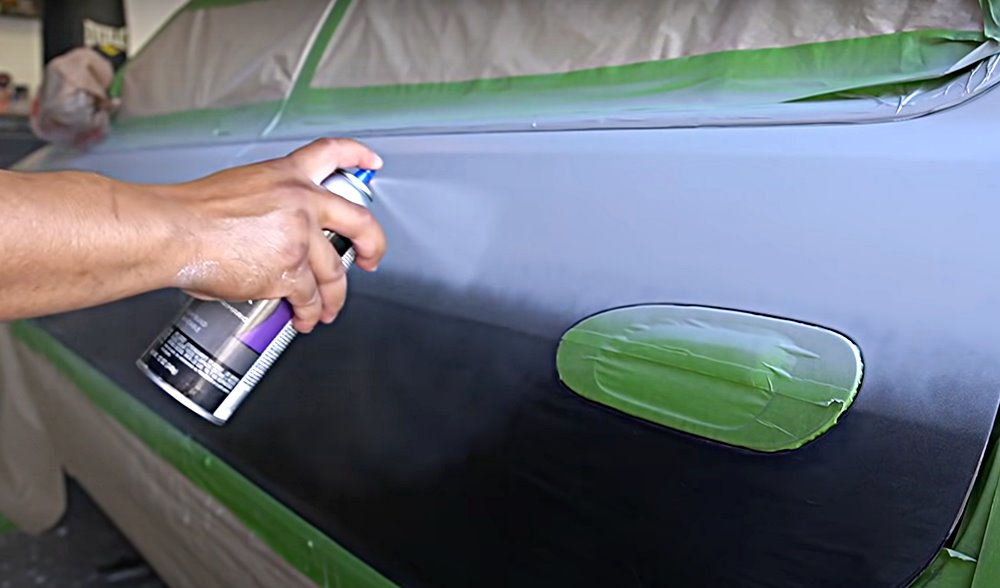You may have just completed a DIY project, and now you are stuck in the lingering stench of spray paint in the air. You are likely to encounter hazardous fumes when you use spray paint on small parts of the home, like a cabinet door and handle. Such chemicals can cause headaches, respiratory issues, and a loss in focus.

In this article, we have discussed six eco-friendly methods that can help you with eliminating the Paint Spray Smell.
How To Get Rid Of Spray Paint Smell
Some venues, particularly those that are particularly harmed by room freshener spray, require specialized assistance. You might also use natural techniques to bring the majority of household freshener odor up to standards.
1. Baking Soda
This baking powder is as effective as other kitchen remedies in its capability as an odor-removing agent and is designed to be employed on surfaces of all sorts, such as clothes, furniture, or refrigerators. Furthermore, baking soda functions particularly effectively when removing spray paint smells.
Add baking soda to a few shallow, open containers, and scatter them throughout affected areas. Baking soda will wick up paint fumes, reducing the risk of exposure to harmful chemicals. After you have finished painting, consider tossing baking soda down your dishwasher to wash out your brushes.
2. Onions
Because of their strong odor, onions can help to mask the overpowering smell of spray paint. If you like the odor of onions, they can be a great way to protect your lungs from toxic fumes.
As far as possible, slice no more than two medium-sized onions and place them in numerous containers around the space. Be careful not to consume the onions after you’re done with them, as they have been damaged by VOCs and might expose you to sickness. Don’t take the risk of cooking with them, either.
3. Charcoal
Activated charcoal is widely used to make many types of household goods including cleaning agents, but it is also effective as a long-lasting odor absorber. It is vital to select activated charcoal because it will be able to absorb odors when it is activated.
You can purchase activated charcoal in small cylinder-shaped canisters, pouches, or in a dry powder that, after dissolving in water, can be poured into cups and placed in rooms where you are painting.
Remember, Crushed charcoal is unable to eliminate the smell of paint as effectively as other organic powders because it’s not entirely made from areas of oxygen where these chemicals can latch on to sink in.
4. Lemon Water
Since water absorbs VOCs on its own, adding one or two slices of fresh lemon can circulate an appealing citrus fragrance into the air, making your area more pleasant and refreshing.
5. Vinegar
If you need something a little stronger than normal lemon juice but don’t want to resort to harsh chemicals, consider giving apple cider vinegar a try. To achieve the best possible results with this procedure, we recommend pouring roughly 1 cup of either apple cider vinegar or distilled white vinegar into several small containers.
Next, place them at all four corners of the room, and place them in every corner of the room. The vinegar will absorb the spray paint vapors without adding any toxicity to the air. Again, dispose of the vinegar after use, and do not be tempted to consume it, as it absorbed VOCs.
6. Coffee Grounds
Coffee beans may prove so popular for the deodorization of spray paint that lots of people promote them. If you ultimately adore the smell of coffee, this method can supply your property with a stimulating scent reminiscent of sophisticated coffeehouses, rather than those from a DIY setup.
Place the coffee grounds in small containers and place them in the space. Coffee grounds can neutralize the unpleasant smell of spray paint. Be sure to dispose of the coffee grounds properly afterward, as they won’t be safe for consumption.
How to get rid of the spray paint smell on plastic
To get rid of the spray paint smell on plastic, you can try the following steps:
Ventilation: First, ensure that the area where the plastic is located is well-ventilated. Open windows or use a fan to help circulate the air.
Clean the plastic: Wipe down the plastic with a clean, damp cloth to remove any excess paint or debris. If the plastic is particularly dirty or sticky, you may need to use a mild detergent and warm water to clean it thoroughly.
White vinegar solution: Mix equal parts white vinegar and water in a spray bottle. Spray the solution onto the plastic and wipe it down with a clean cloth. The acidic nature of the vinegar can help neutralize the smell of the spray paint.
Baking soda: Sprinkle baking soda over the plastic and let it sit for a few hours or overnight. The baking soda will help absorb any remaining odors. Then, wipe down the plastic with a clean cloth.
Activated charcoal: Place activated charcoal in a container near the plastic. The charcoal will help absorb any lingering smells.
It may take a few attempts to completely eliminate the spray paint smell on plastic. If the odor persists after trying these methods, you may need to repeat the process or consider seeking professional assistance.
How to get rid of the spray paint smell on wood
To get rid of the spray paint smell on wood, you can try the following steps:
Ventilation: Ensure the area where the wood is located is well-ventilated. Open windows or use a fan to help circulate the air.
Clean the wood: Wipe down the wood with a clean, damp cloth to remove any excess paint or debris. If the wood is particularly dirty or sticky, you may need to use a mild detergent and warm water to clean it thoroughly.
White vinegar solution: Mix equal parts white vinegar and water in a spray bottle. Spray the solution onto the wood and wipe it down with a clean cloth. The acidic nature of the vinegar can help neutralize the smell of the spray paint.
Baking soda: Sprinkle baking soda over the wood and let it sit for a few hours or overnight. The baking soda will help absorb any remaining odors. Then, wipe down the wood with a clean cloth.
Charcoal or coffee grounds: Place activated charcoal or coffee grounds in a container near the wood. The charcoal or coffee grounds will help absorb any lingering smells.
Sanding: If the smell persists, consider lightly sanding the painted area of the wood to remove any remaining layers of paint that may be contributing to the odor.
It may take a few attempts to completely eliminate the spray paint smell on the wood. If the odor persists after trying these methods, you may need to repeat the process or consider seeking professional assistance.
How to get rid of the spray paint smell on fabric
Getting rid of the spray paint smell on fabric can be challenging, but here are some steps you can try:
Ventilation: Ensure the area where the fabric is located is well-ventilated. Open windows or use a fan to help circulate the air.
Remove excess paint: Use a cloth or paper towel to blot up any excess paint that has not yet dried. Be careful not to rub the stain as this can spread it further.
Dish soap: Mix a small amount of dish soap with warm water and apply it to the stain. Use a clean cloth to blot the stain and remove as much of the paint as possible.
White vinegar solution: Mix equal parts white vinegar and water in a spray bottle. Spray the solution onto the fabric and allow it to sit for 15-30 minutes. Then, blot the area with a clean cloth.
Baking soda: Sprinkle baking soda over the fabric and let it sit for a few hours or overnight. The baking soda will help absorb any remaining odors. Then, vacuum up the baking soda with a vacuum cleaner.
Odor-eliminating spray: Use an odor-eliminating spray, such as Febreze, to neutralize any remaining smells.
Washing machine: Wash the fabric in the washing machine using a mild detergent and the hottest water setting recommended for the fabric. This will help remove any remaining odor and ensure that the fabric is thoroughly clean.
It may take a few attempts to completely eliminate the spray paint smell on the fabric. If the odor persists after trying these methods, you may need to repeat the process or consider seeking professional assistance.
FAQs
Is the smell of spray paint harmful?
Yes, the smell of spray paint can be harmful to your health, particularly if you inhale it in large amounts or for a prolonged period of time. Spray paint contains chemicals, such as solvents and propellants, which can cause a range of health problems, including headaches, dizziness, nausea, and irritation of the eyes, nose, and throat.
Some of the chemicals in spray paint, such as toluene, xylene, and benzene, can also be toxic and cause damage to the nervous system, liver, and kidneys. Additionally, inhaling spray paint in enclosed spaces or without proper ventilation can lead to oxygen deprivation and potentially life-threatening conditions, such as asphyxiation.
Therefore, it is important to use spray paint in a well-ventilated area and to wear a respirator or mask specifically designed for painting to protect your health. If you experience any adverse symptoms after using spray paint, seek medical attention immediately.
What happens if you breathe in spray paint fumes?
You might breathe in spray paint fumes. When inhaled, these fumes can trigger headaches, dizziness, nausea, and other symptoms. If you’re in the vicinity of spray paint fumes and get those indications, you might need to prevent working in those areas for a time.
Other potential long-term effects of spray paint fume inhalation include respiratory issues, skin diseases, and lung ailments.
How long does the spray paint smell take to go away?
Though the odor of spray paint can usually be eliminated within a few days, sometimes, it can remain indoors for weeks. This often happens if you neglect to keep the room properly ventilated during and after spray painting.
Conclusion
In conclusion, removing the paint smell from your home is fairly easy. You can use any of the methods that you mentioned above.


